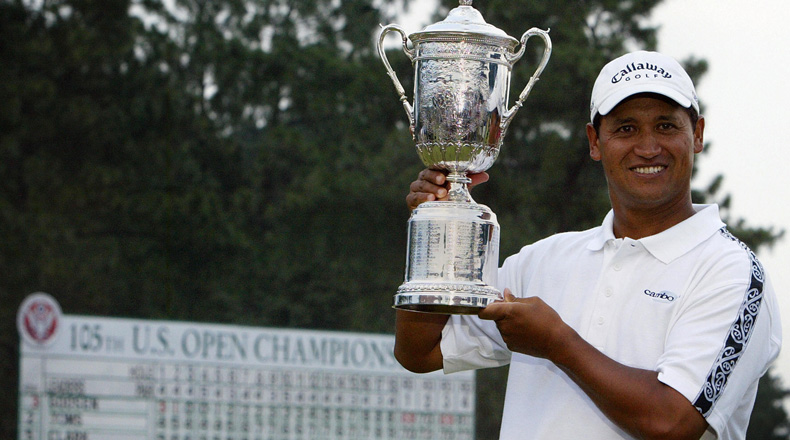When Cambo Tamed Tiger
1Golf’s U.S. Open gets underway overnight. Long considered the toughest of the Men’s Majors, this year it returns to one of its toughest venues; the venerable and brutal Oakmont Country Club in the Pittsburgh suburbs. One Kiwi will tee it up, with Ryan Fox’s two wins on the PGA Tour in the past month seeing him climb the rankings high enough to take one of the last spots in the field. But can he repeat what happened 20 years ago?
————————————————————————————–
When he turned pro in late 1992, Michael Campbell was one of the best amateurs in the world and coming off being part of the Eisenhower Cup winning team that. Success had come quickly on both the Australasian and European tours, and he’d experienced being at the sharp end of a Major in 1995 after shooting a Saturday 65 to take the lead at The (British) Open at St Andrews. But he’d struggled in a brutal wind on the Sunday, shooting a four-over 76 to finish one shot out of the playoff win by John Daly. The decade after had seen wild swings in his form, with prolonged slumps and injuries punctuated by periods of brilliance.
Having fallen outside the top 300 in the world, Campbell hadn’t even contemplated trying to qualify for the 2005 U.S. Open, but that year for the first time the USGA had instituted a sectional qualifier in Europe. Campbell played and claimed one of the nine spots on offer, and was off to the famous Pinehurst #2 course in North Carolina.
Fast forward to the eve of the final round, and Campbell had shot rounds of 71-69-71 to sit at one over par for the championship. For the final eighteen he was paired with American journeyman Olin Browne, who was one shot ahead and tied with the unheralded Jason Gore. Everyone would be chasing Gore’s playing partner Retief Goosen however, with the seemingly unflappable South African three shots clear and looking for his second successive U.S. Open title and third in all. Three groups ahead of Campbell would be one Tiger Woods, six shots off the lead but looking to make one of those famous Sunday charges.
Campbell would make the ideal start with a birdie at the first before reeling off six pars before a dropped shot at the eighth. As steady as he was though, around him chaos reigned. Browne had dropped six shots, Gore five, and most shockingly, Goosen’s game had deserted him and he’d gone from three-under to three-over. As he stood on the 10th tee, Campbell again held the outright lead in a Major.
Up ahead Woods had turned at four-over, but then birdied the 10th and followed with another at 11. As the roars echoed through the pines Campbell followed suit, dropping a 25-footer, then saving par from the sand at 11. After hitting his second into 12 Campbell disappeared off to use the toilet, bit it wasn’t the call of nature he was answering; rather he was ducking off to do some eye exercises. And they immediately paid dividends, dropping a 30-footer to get under par and three shots ahead. Pars at the next three followed, but Woods applied the pressure with a birdie at the Par-3 15th to cut the margin to two. At 16 though Woods bogied, as did Campbell after his drive at the long par-four found some of the thickest rough on the course. It was Woods who – rather uncharacteristically – blinked though, three-putting to drop another shot at the 17th before getting it back at the last.
As Woods finished out to end up at two-over, Campbell delivered the knockout punch at 17. A perfect eight-iron onto the green, another trip to the port-a-loos for another round of eye exercises, and another 20-plus footer found the bottom of the cup. A conservative bogey at the last only cost him finishing under par for the championship, but his Sunday 69 for an even-par total of 280 was enough to beat Tiger by two shots. The two were among the few to break par in the last round those others mentioned above? Browne shot 80, Goosen 81, and Gore a brutal 84.
Ten years after letting one Major slip through his fingers, the kid from South Taranaki via Titahi Bay had improbably gotten his hands around one of golf’s biggest prizes. And did it staring down the biggest name in the game.
You can watch the whole final round here on YouTube.
Follow Scott on Twitter


After reading the article, I have several comments I’d like to share. The writing style is generally clear and accessible, which is a great strength. Streamlining repetitive parts and enhancing the conclusion with a thought-provoking insight or call to action could leave a lasting impression on readers.